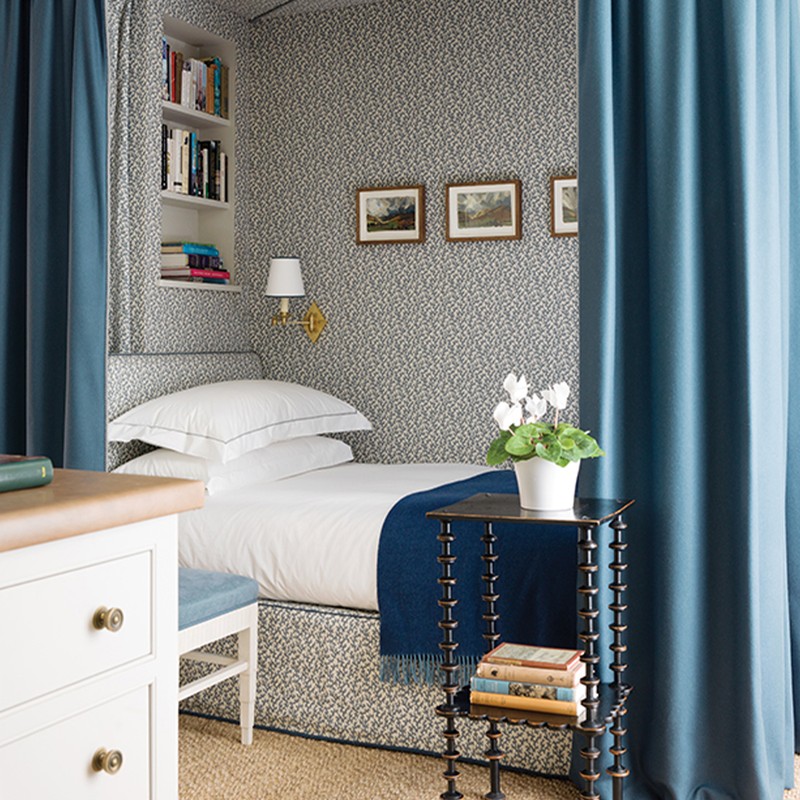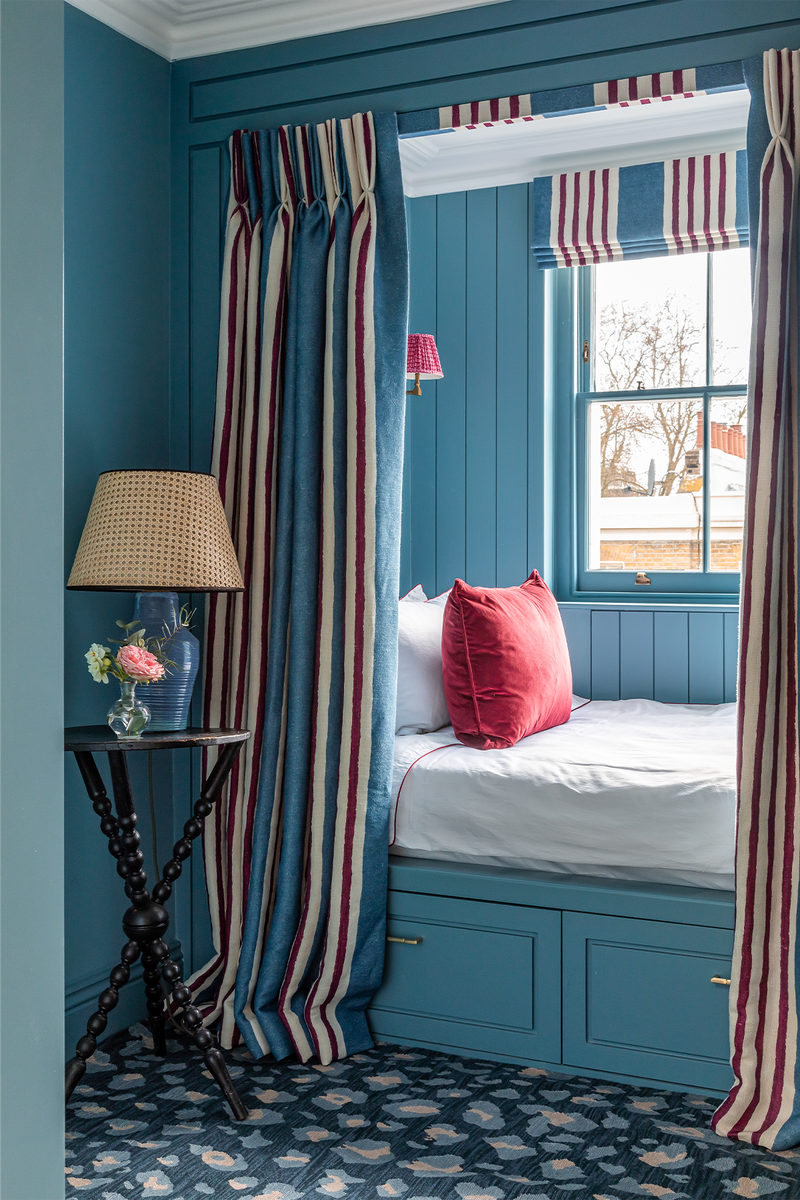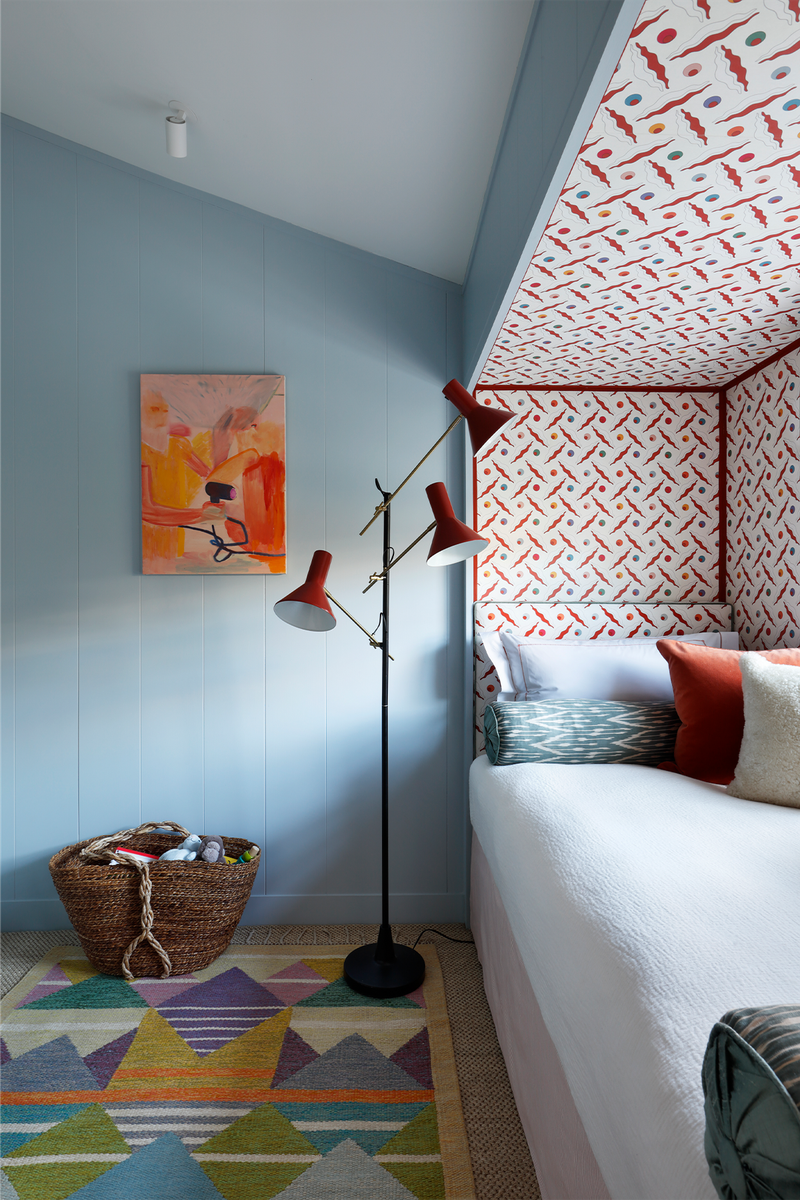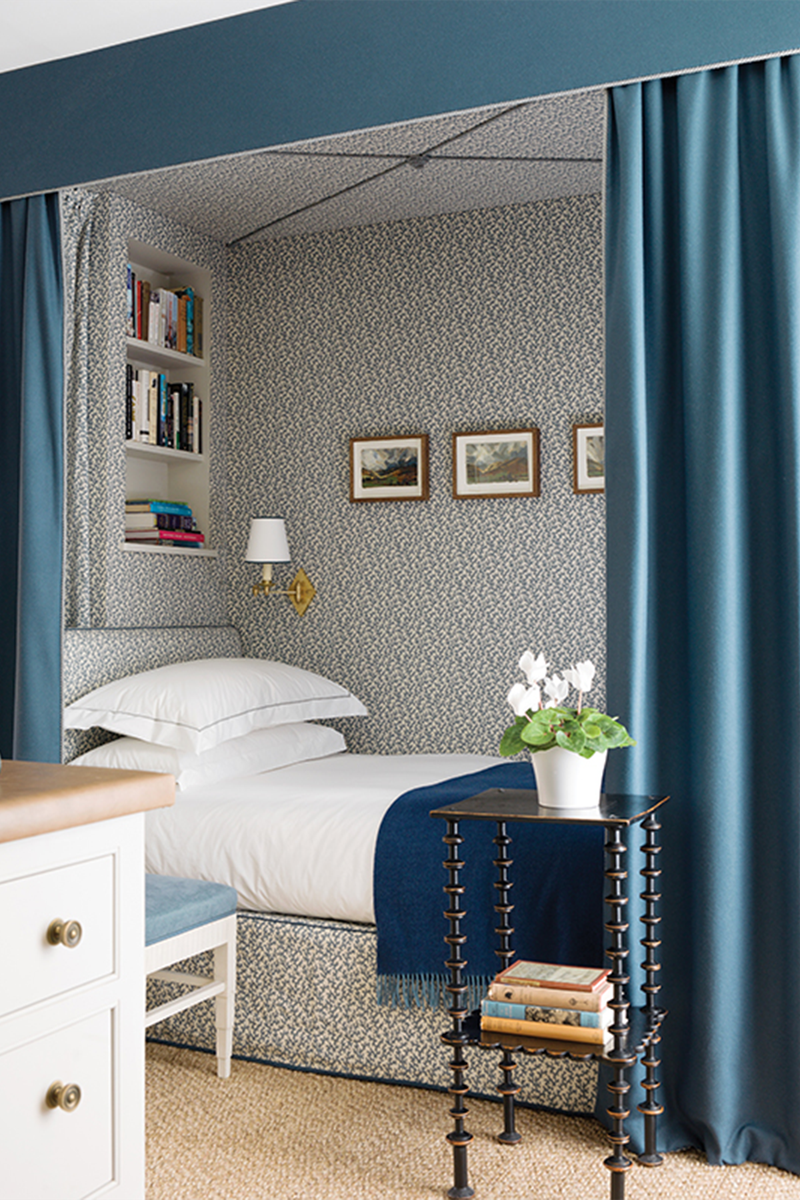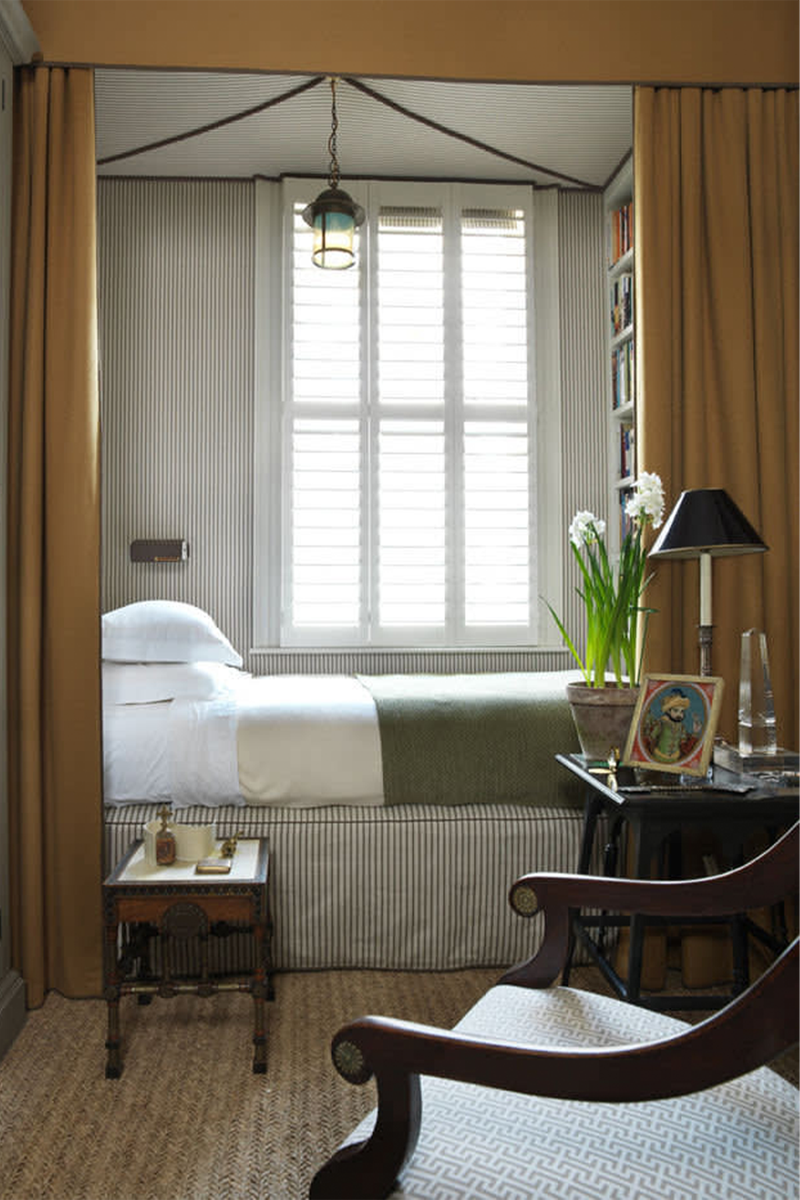The Bedroom Addition We Love
A Space-Saving Solution
When it comes to interior design, small spaces can make you work harder than big ones, and it was the challenge of a compact bedroom that led interior designer Veere Grenney to create a bed alcove – a feature that has become a signature of his work since. “We first made a bed alcove for a room which was so small there was really no other space to place the bed. So it was driven by practicality – but it was so successful it’s now become a client request in almost every project.”
Not only a serious interior design statement, a bed alcove indeed serves a practical purpose. “Where you have a low ceiling, particularly if it’s only in one part of a room (for example, a sloped roof), it can be tricky to know what to do with the space,” explains Sarah Peake, founder of Studio Peake. “A bed nook is a great way to use the space because the low ceiling won’t matter. It makes for a cosy, defined area, which can also include some clever joinery and storage.”
A Comfortable, Accessible Space
The key is to make it comfortable, which means ensuring everything you could need is easily accessible. “A wall light for reading, shelves for books and a ceiling light – it’s almost worth thinking about it as a room within a room,” advises Veere.
Another thing to bear in mind: a bed nook tends to lend itself to occasional rather than permanent use. “I often design bed nooks into rooms where the bed is not going to be used every day, for example in a study or spare room with a single or day bed,” says Sarah. The design works best with a single bed – Veere’s philosophy is based on creating a small space within a small space, so you almost get two rooms for the price of one.
A Decorating Dream
The bed alcove itself is made from joinery, a divan bed and lots of fabric. You can either use curtains – making them like dress curtains that aren’t pulled closed – or use more fabric to be able to draw them, depending on whether you want to close the bed off completely or keep it open. If you don’t want curtains, try timber boarding around it instead.
There is no right answer when it comes to choosing wallpaper or fabric – this can be down to both budget and style. Sarah used both in her design: “I often like to wallpaper within the bed nook, so it feels set apart from the rest of the room – like a separate space. It also allows you to use a bold pattern or exotic colour in a small area which might feel overwhelming if applied to the entire room. Here, the headboard and footboards are upholstered in Ottoline printed fabric with matching wallpaper and a blind. We used contrast piping around the headboards from Samuel & Sons, and roman blind borders from Colefax & Fowler.”
A Lighting & Storage Opportunity
A bed alcove also offers the chance to use interesting lighting. Wall lights, hanging pendants and lanterns all have a place. “We often use little wall lights that can be locally switched on from the back plate or, if you have a shelf big enough for a lamp, and wiring for a socket is possible, that can also work,” suggests Sarah.
If you have a window, it’s a good idea to base your nook around it and let lots of natural light into the space during the day. “Installing a roman blind in a matching fabric makes the bed nook feel very tailored and neat,” says Sarah. Ideally, choose a roman or roller blind or shutters, or even both (curtains are best avoided). A radiator under a window can be problematic as it will cause the bed to jut out. “It’s preferable to have it at one end under a bookcase or something similar,” says Veere.
The advantage of a built-in design like this is the storage – clever use of storage can make or break a room. “This divan base had a storage drawer within it and a cupboard to the side of it,” Sarah says of her design. “We incorporated a bookcase above the headboard (as there was no room for a bedside table) and also included a wall light within the nook (in place of a bedside lamp).”
For more information and inspiration, visit VeereGrenney.com & StudioPeake.com.
DISCLAIMER: We endeavour to always credit the correct original source of every image we use. If you think a credit may be incorrect, please contact us at info@sheerluxe.com.
